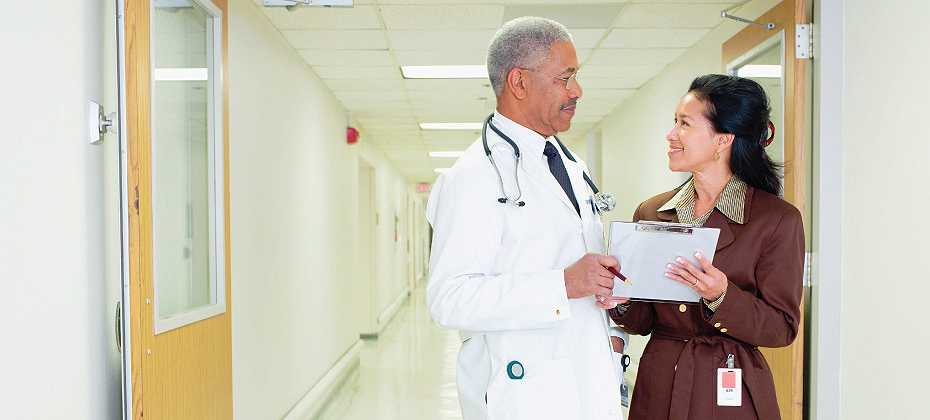
Does a patient’s age influence their experiences with rising healthcare costs? A recent report from Experian Health and PYMNTS points to a generational gap when it comes to the impact of and responses to medical bills. The study takes a deep dive into how Gen Z, millennials, Gen X and seniors are reacting to the growing cost of care. From canceling appointments to being surprised by out-of-pocket expenses, this article looks at the key differences in generations and healthcare costs, and the tools and solutions providers can implement to support their patients.
Millennials are most likely to cancel appointments due to high-cost estimates
A worrying proportion of patients are choosing to delay or forego care because of concerns about cost. This seems to be felt most acutely among younger patients. According to the new data, 74% of millennials and 56% of Gen Z patients have canceled a healthcare appointment after receiving a cost estimate that was higher than they could afford, compared to 13% of baby boomers and seniors. Gen X patients fell in the middle, with just over half canceling appointments after receiving high estimates.
That said, healthcare costs affect all generations. While older patients seem less likely to cancel appointments due to cost, the “Medicare Effect” suggests that many hold off seeking care in the first place, until their costs are covered at age 65. Many households, regardless of demographic, are walking a financial tightrope as inflation continues to climb and patients bear responsibility for a greater portion of healthcare costs.
Providers can help minimize the number of patients forgoing essential care by helping to track down any available coverage, so patients aren’t inadvertently billed for care that could have been covered by a forgotten health plan. Coverage Discovery continuously scans commercial and government coverage using multiple proprietary data repositories, advanced search heuristics, and machine learning matching algorithms. Finding missing coverage means upfront estimates will be more accurate, and patients will be likely to see a lower co-pay amount. In 2021, Coverage Discovery tracked down previously unknown billable coverage in more than 27.5% of self-pay accounts and found more than $66 billion in corresponding charges, removing a huge burden for patients and providers alike.
Gen Z patients are most surprised by out-of-pocket expenses
Overall, 19% of patients found they spent more on healthcare than they could afford in the last 12 months. As would be expected, those who received inaccurate estimates (43%) experienced more financial distress than those who received accurate estimates (26%). Among those who paid out-of-pocket expenses for their most recent healthcare visit, Gen Z patients were the least aware that they would be required to make a payment, with 32% not knowing that they’d need to make co-payments. Only 20% of Gen X and 10% of baby boomers and senior patients were unaware.
One way to alleviate the strain of unexpected bills is to issue cost estimates automatically, before the patient’s visit. Only 34% of surveyed patients received estimates automatically before their visit, so it’s no surprise that many are caught unaware when the final bill arrives.
With Patient Estimates, patients get a breakdown of their expected costs based on real-time provider and payer data. The estimates are delivered automatically to the patient’s mobile device (along with links to convenient payment methods. An earlier report by Experian Health and PYMNTS found that patient satisfaction rose by 10% when billing estimates were provided, underscoring their value.
Millennials pay the highest out-of-pocket expenses
Millennials appear to have been hardest hit by out-of-pocket bills. The average across all respondents was $363, but millennials paid an average of $619. This could explain why millennials were more likely to cancel appointments.
Providers can help patients manage balance bills by providing tools that make it easier to plan and pay their bills. For example, Patient Financial Clearance screens and segments patients so providers can help guide them to the most suitable financial pathway. PatientSimple and Patient Financial Advisor help patients access cost estimates, identify best-fit payment plans, apply for financial assistance and make payments, via their patient portal or mobile device.
Baby boomers and seniors are most satisfied with the healthcare payment process
Most patients were generally satisfied with the payment process for their medical bills. Older patients appeared to be slightly more content, with 77% of baby boomers and seniors saying they were satisfied, compared to just under 70% of Gen X and millennial patients. Gen Z was the least satisfied, at 60%. With 22% of unsatisfied patients saying they’d consider switching providers, getting the payment experience right is high stakes for providers.
So, how can providers improve the payment experience for those who are less than completely satisfied? Accurate estimates, tailored payment plans, clear communication and convenient payment methods will all be in the mix. For most healthcare organizations, this will mean embracing digital tools and automation.
Experian Health’s State of Patient Access 2.0 survey revealed that while younger patients may be especially receptive to a digital patient payment experience, it crosses generational lines. Members of “Gen C” – digitally-connected consumers of all ages – are looking for a streamlined payment experience. When patient loyalty and decisions about when to receive care are so heavily influenced by the financial journey, it makes sense to offer digital estimates, billing and payments where possible.
The good news for providers is that prioritizing patient satisfaction doesn’t mean sacrificing efficiency. Automation and digitalization can facilitate greater choice and convenience for patients, without requiring additional staff input. In fact, it’s likely to yield productivity gains and free up staff to focus on delivering an even better patient experience, and support patients to get the care they need.
Find out more about how Experian Health’s suite of patient payment solutions can help providers deliver a financial experience that satisfies patients of all generations and healthcare costs.


